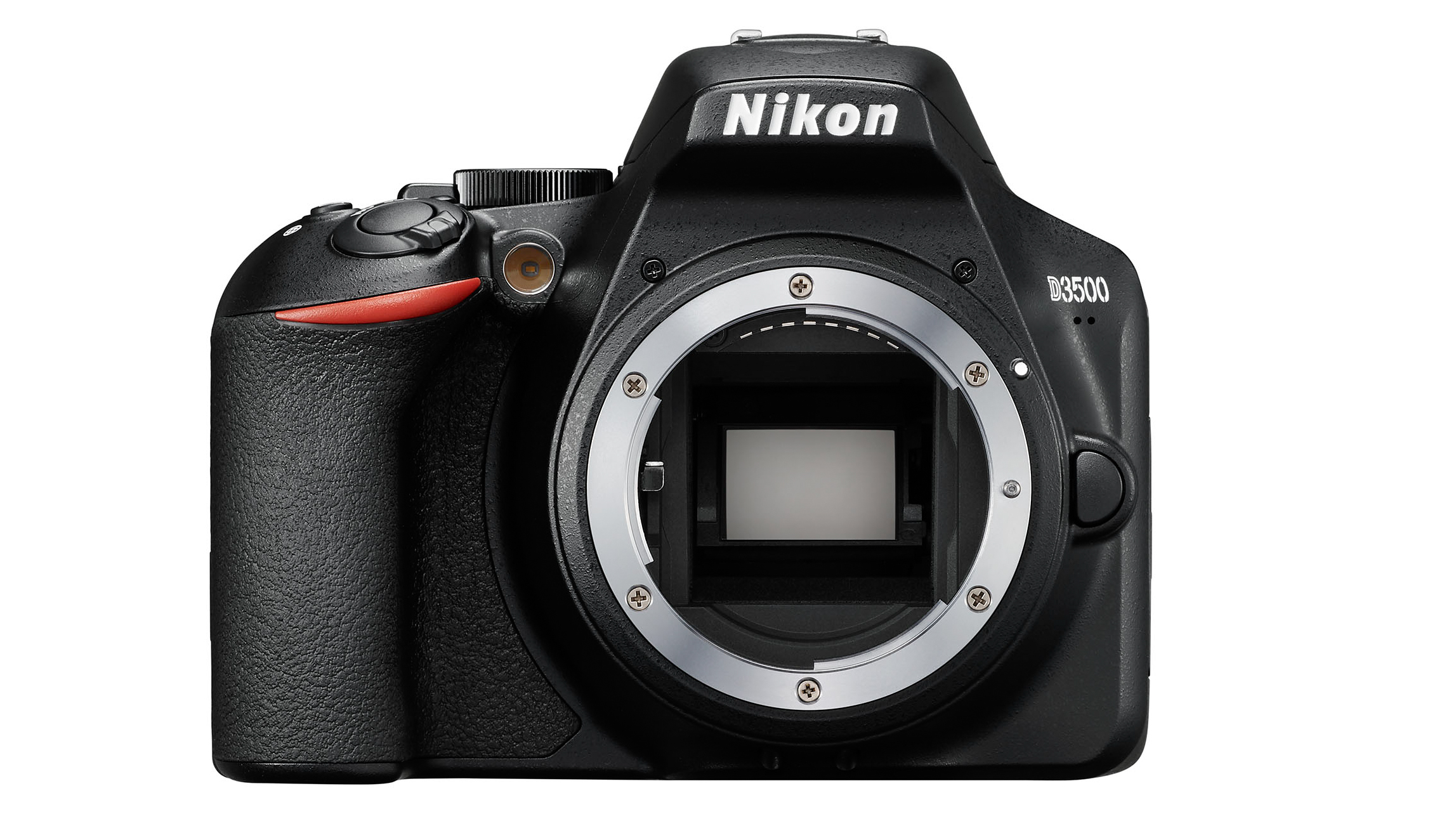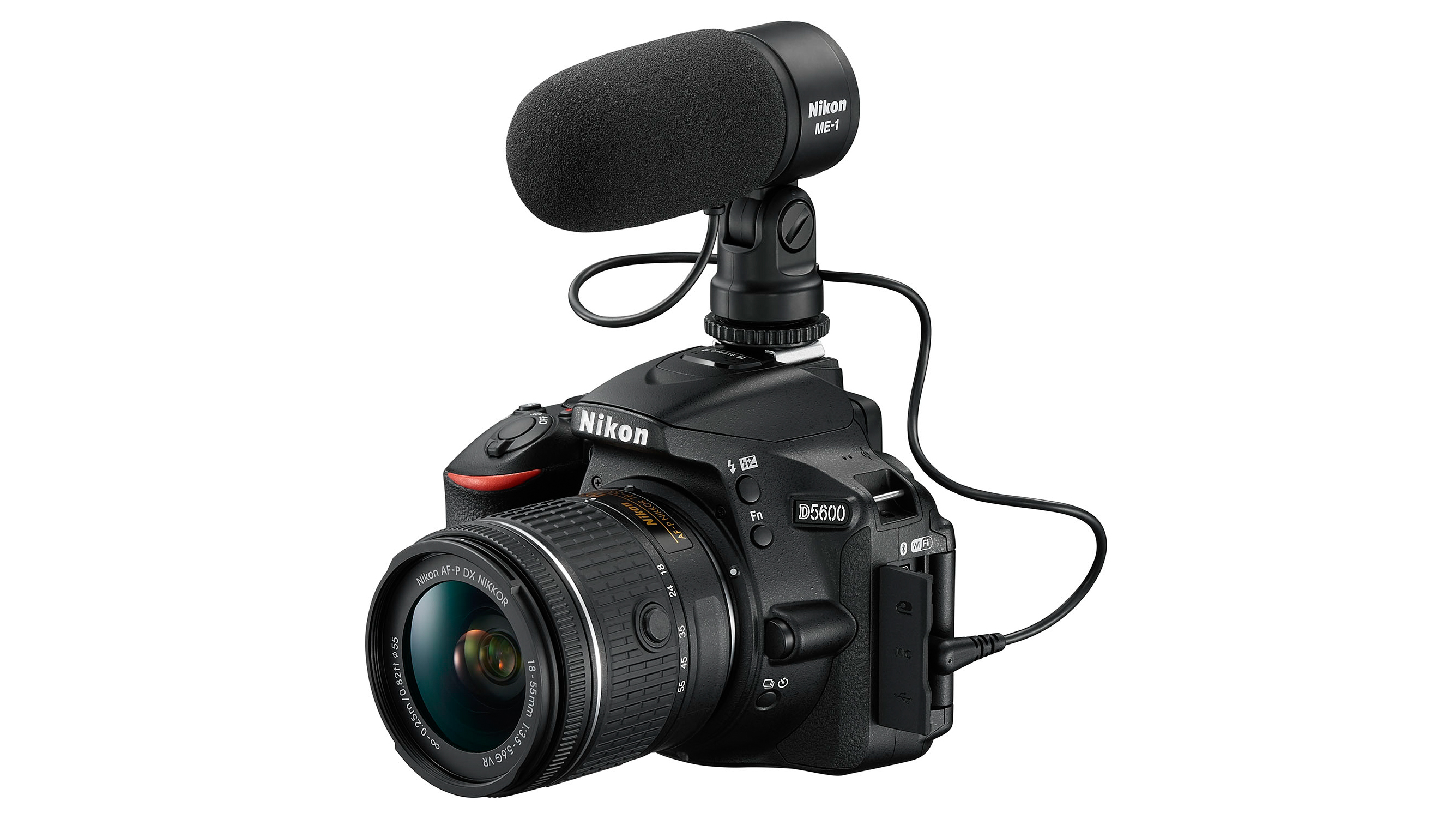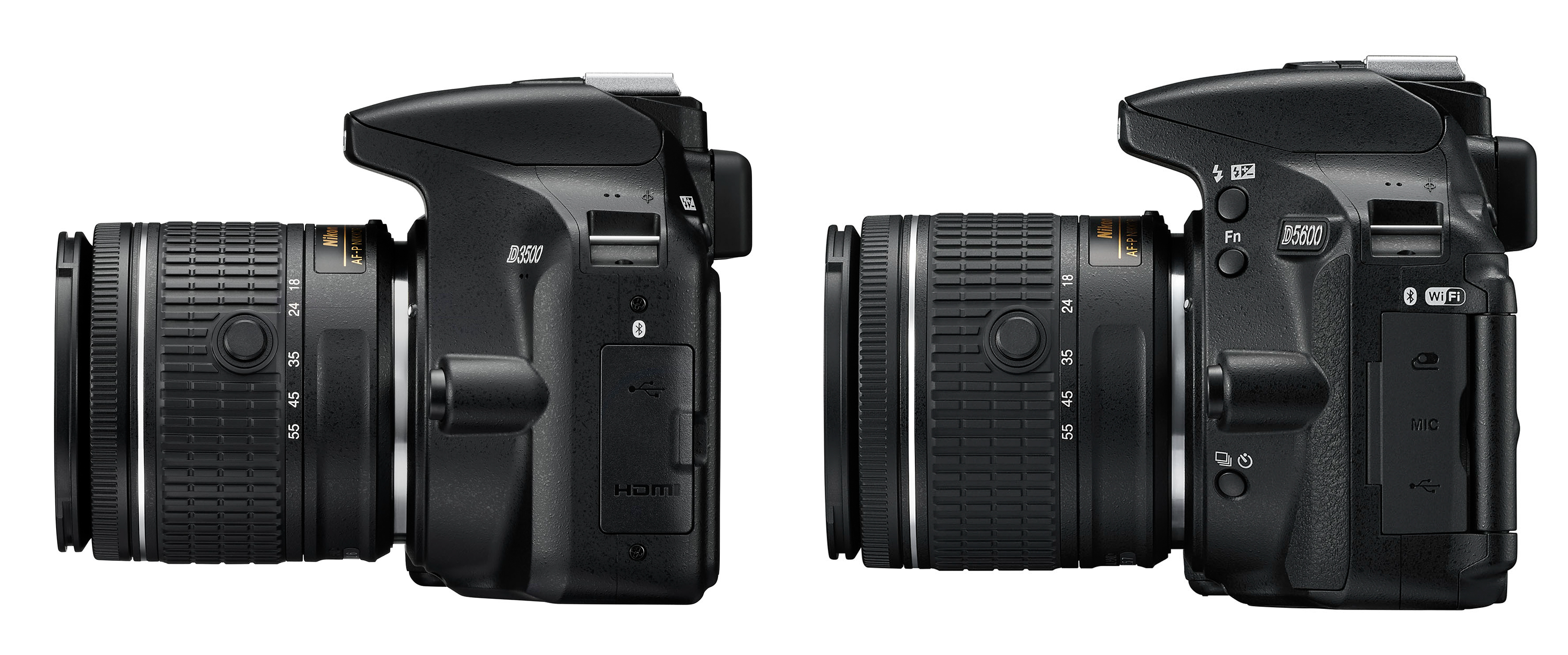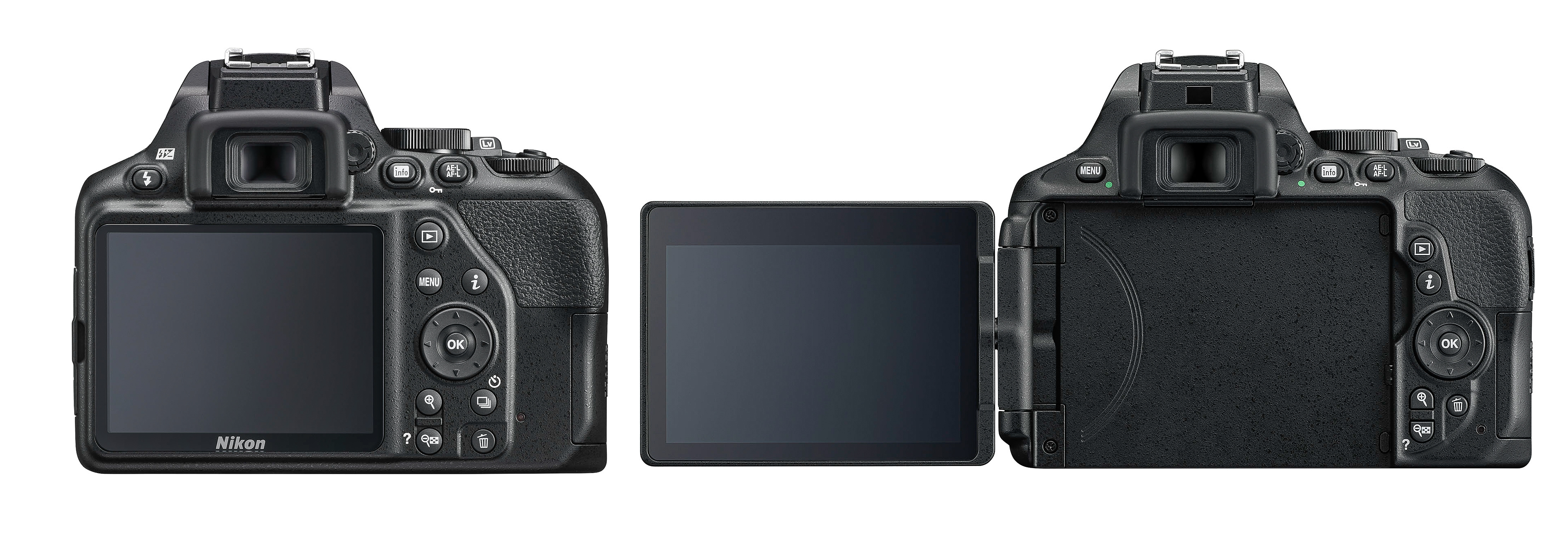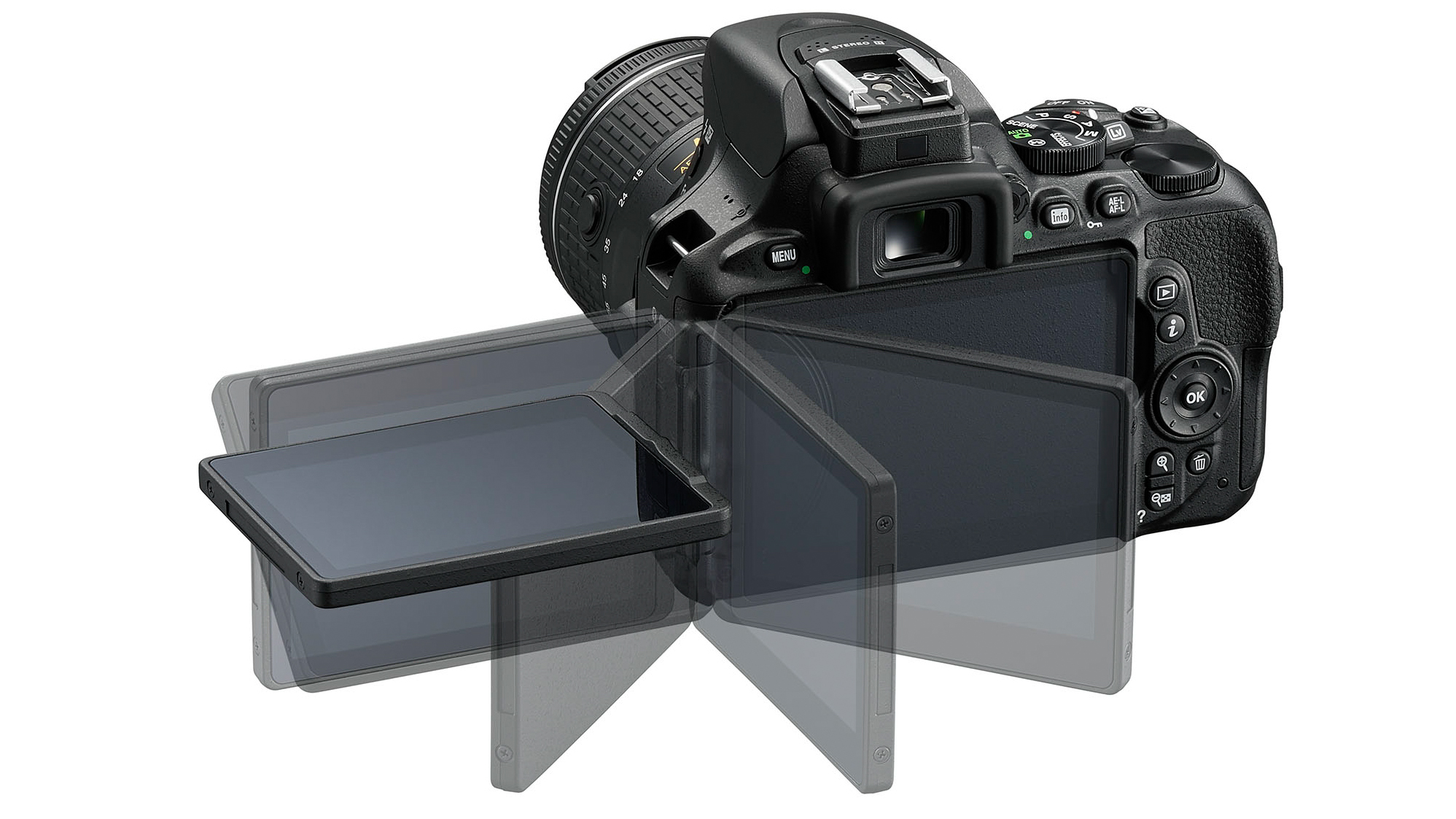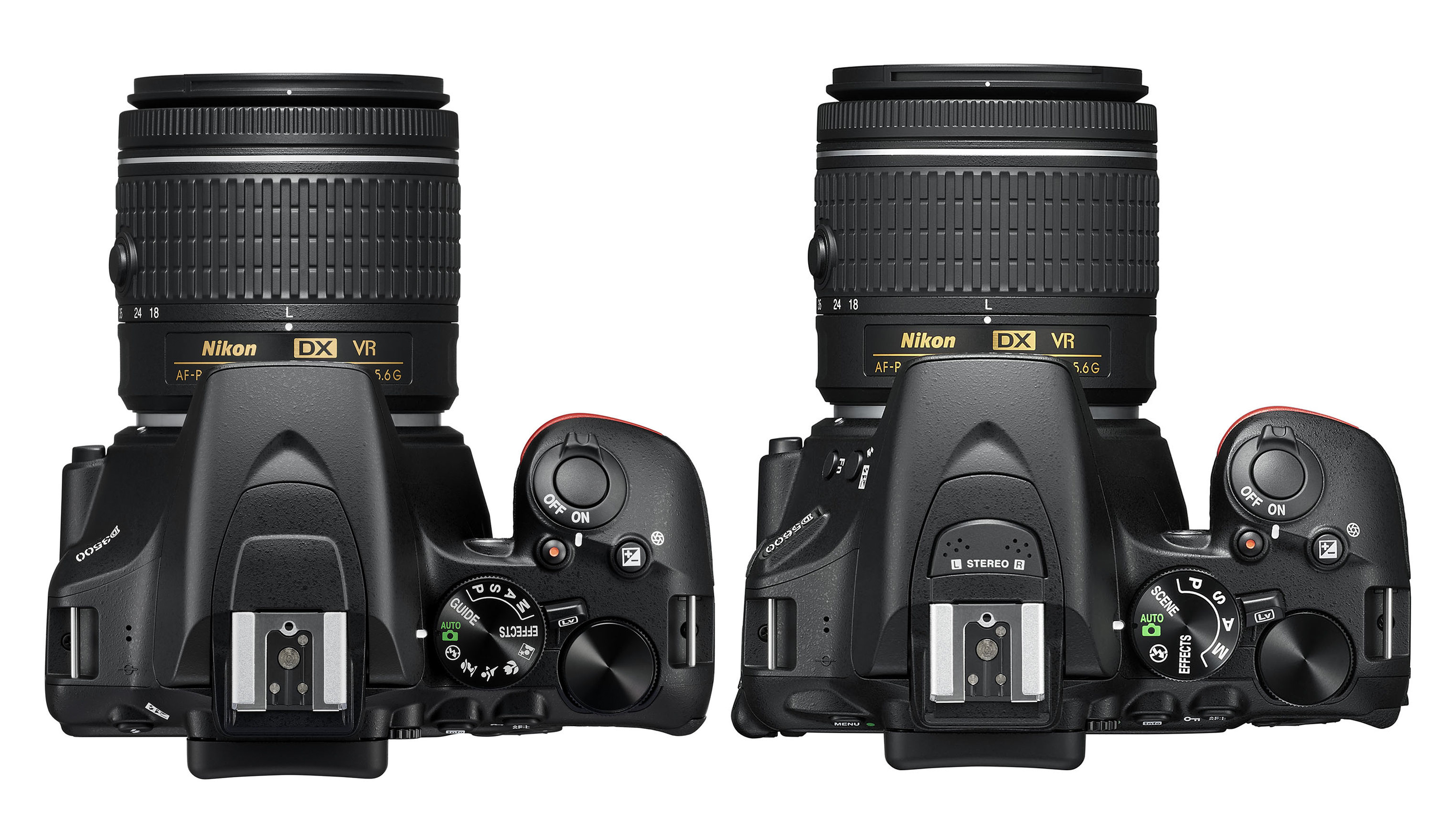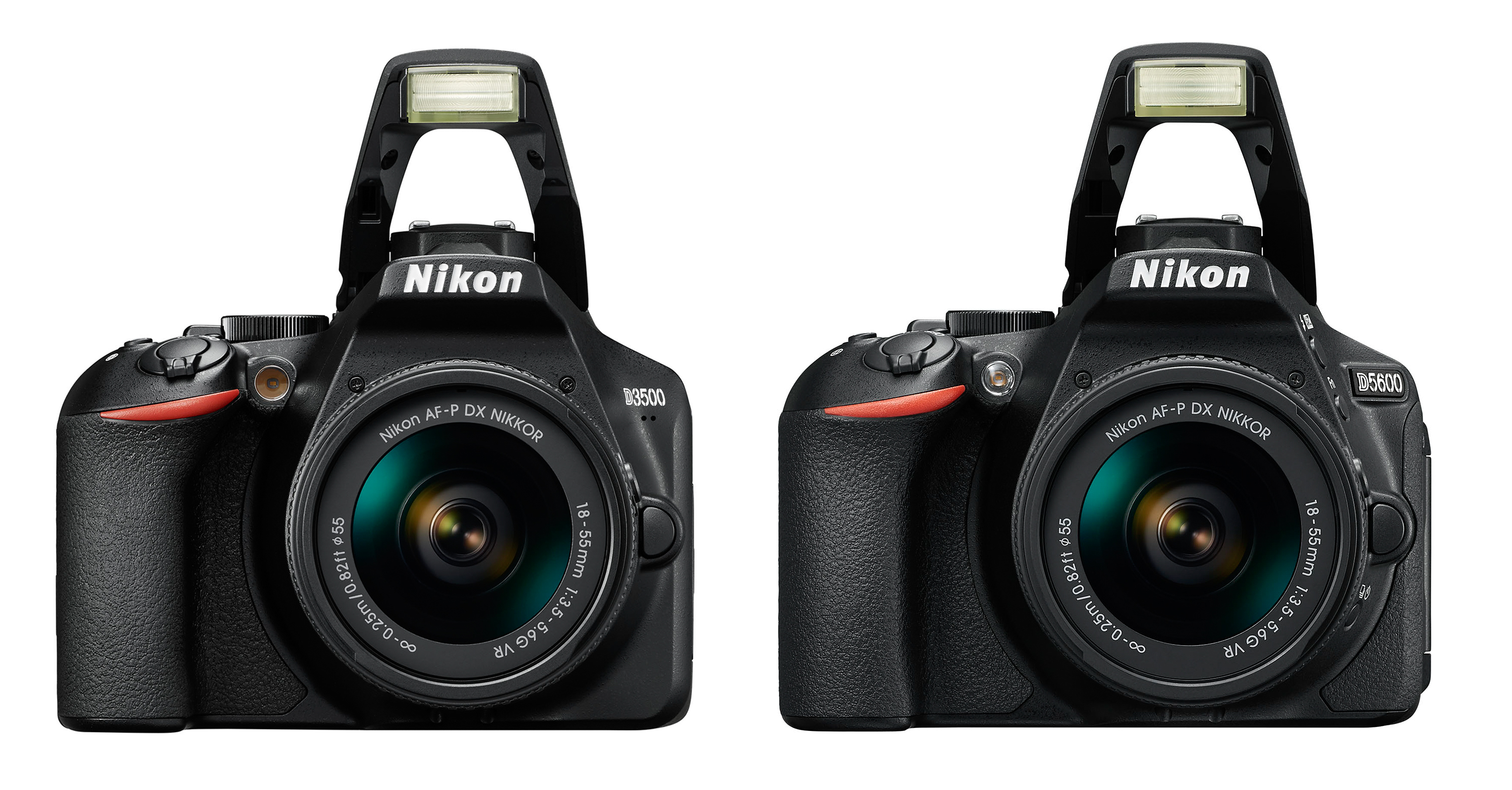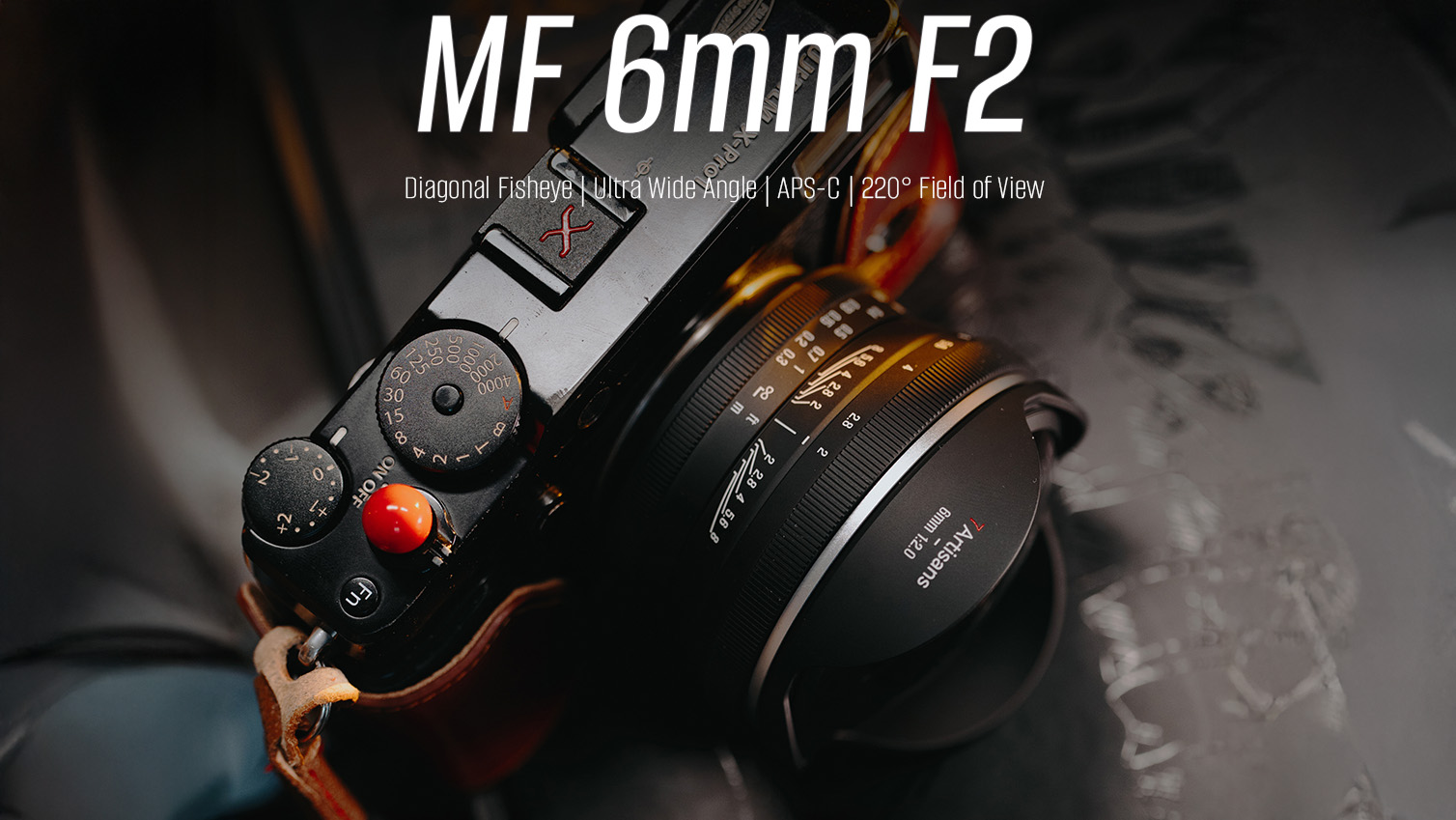Nikon D3500 vs D5600 - which camera should you buy?
When it comes to starter DSLRs, how does Nikon’s DSLRs stack up? This Nikon D3500 vs D5600 comparison gives the answers
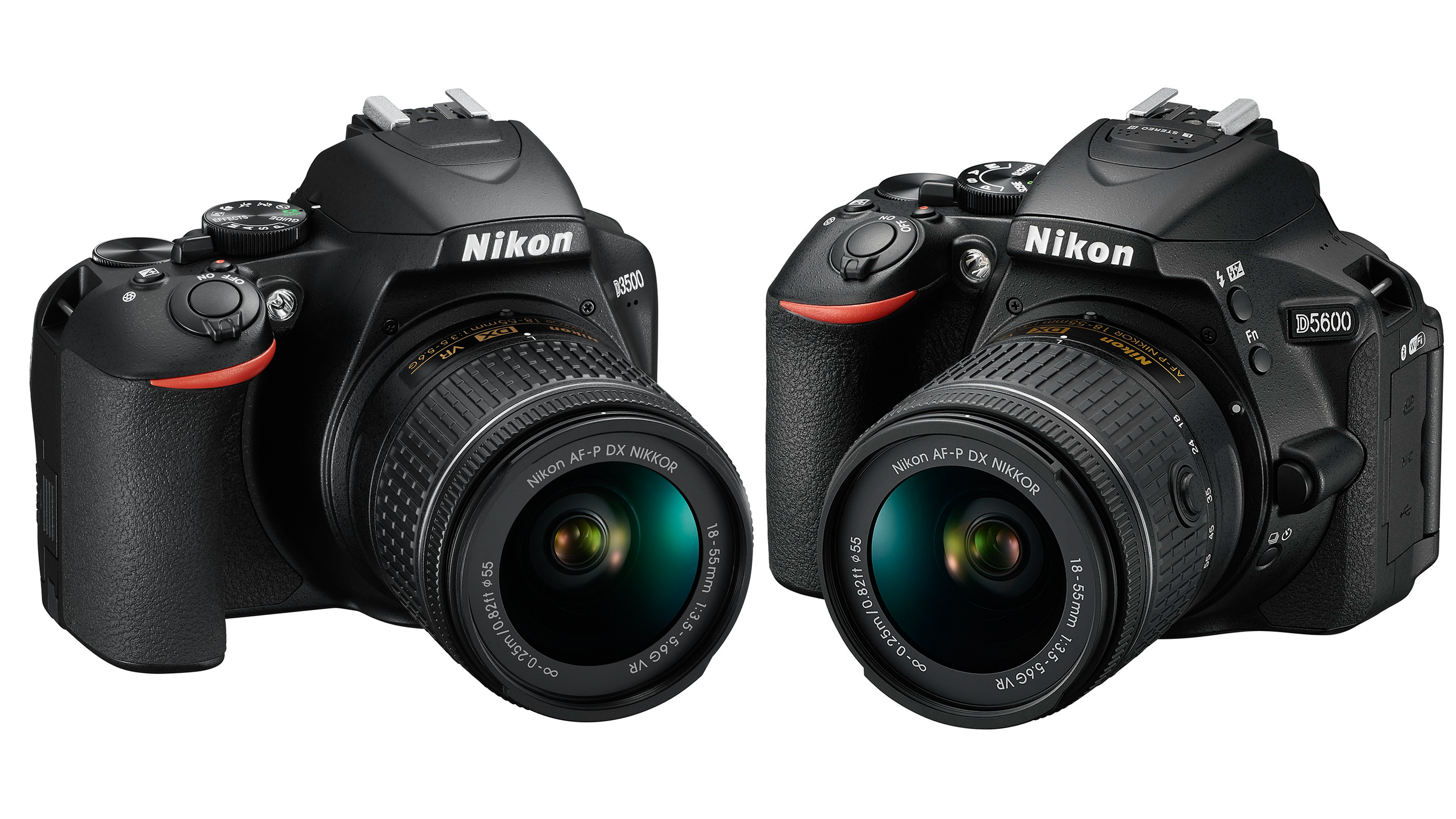
In this Nikon D3500 vs D5600 comparison guide we help you pick the best option from Nikon's current starter DSLRs – and help you find the best price.
If you’re content with traditional DSLR rather than new-kid-on-the-block mirrorless, a great way of pledging allegiance to a camera system for the first time is by investigating Nikon’s budget ‘D’ series digital SLR offerings. Both the Nikon D3500 we’re spotlighting here and its numerically superior – but actually surprisingly similarly specified – Nikon D5600 feature a standard for their class APS-C sensor and are aimed at aspiring photographers looking for greater creativity and flexibility than a smartphone can provide.
Whichever of these two options you decide on, by choosing a Nikon DSLR you will have access to an extremely broad range of Nikon F-mount, DX format (APS-C) lenses and accessories. This is obviously another distinct advantage.
Below we run through the D3500 and its D5600 sibling’s essential key features, including a selection of our opinions at the time we reviewed them. We also share some of the best current prices for both DSLRs, which will provide plenty of beginner friendliness and responsiveness.
As we noted in our introduction, while neither Nikon’s D3500 or the D5600 is the latest mirrorless must-have, the size and relative weight here means that these DSLR alternatives are nonetheless well worth considering.
• Read more: Nikon D3500 vs D3400
Additionally, if it’s weight and bulk which possibly concerns you when considering a DSLR, at the time of release the Nikon D3500 was the manufacturer’s lightest of its ilk, at just 415g with battery and SD memory card. Like the only marginally heavier D5600 – at 465g with battery and card – the D3500 arguably features everything you need to get started when it comes to interchangeable lens photography. As well as being lighter, the D3500 is also less expensive than its same range alternative. But of course, even if sensor and resolution is the same, there is more to it than size, weight and cost in terms of tipping the balance in favor of one or the other, as we’ll investigate.
Direct comparisons aside, whichever of these two you might be considering buying, are we still looking at two of the best entry level DSLRs today? Read on to find out…
Nikon D3500 vs Nikon D5600: Sensor and processor
Why you can trust Digital Camera World
Nikon D3500:
24.78 megapixel APS-C 23.5x15.6mm CMOS sensor and EXPEED 4 processor
Nikon D5600:
24.78 megapixel APS-C 23.5x15.6mm CMOS sensor and EXPEED 4 processor
As noted in our intro, both of the DSLRs under our spotlight here feature an APS-C Nikon DX format sensor, delivering potential first time Nikon users a 24.2 million pixel effective resolution. Considering at one time in the mid 2000’s there was a generally accepted view that six megapixels was ‘enough’ at a consumer level, even in the age of 40MP pro DSLRs this is pretty good bang for our buck.
As well as an identical pixel count, both DSLRs also feature the fourth generation of their manufacturer’s processor; new at the time of the cameras’ release, but now superseded. The combination of sensor and processor on each is claimed to produce results that are richly detailed, and very closely matched. Both cameras additionally offer identical light sensitivity settings, running from ISO100 to 25600. Furthermore the D3500 and D5600 also omit a low pass filter to eke out a little more detail from subjects than counterparts – on paper at least. It all confirms our initial impression that these are very much peas from the same pod – so we’ll have to look further than these essential core features to discover differentiation.
Nikon D3500 vs Nikon D5600 video
Nikon D3500: Full HD 1920x1080 pixels at up to 59.94fps
Nikon D5600: Full HD 1920x1080 pixels at up to 59.94fps
Though you’ll mainly be buying these options for stills photography, when alternately switched to Live View mode, both these beginner friendly DSLRs offer the ability to shoot Full HD quality video clips of just a fraction less than 30 minutes maximum duration. While some may bemoan the fact that there is no 4K video offered here, you have to remember these are entry-level models in their manufacturer’s series and most amateur videographers will be happy with its Full HD 1920x1080 pixel clips. As on its D5600 big brother, the user selectable frame rates on the D3500 are 59.94fps, 50fps, 29.97fps, 25fps and 23.976fps. When shooting video, users also have access to the creatively useful ISO100 to 25600 light sensitivity settings.
On the Nikon D5600 we again get Full HD video clips at up to 59.94fps maximum frame rate, with continuous auto focus deployed when in Live View recording mode in order to keep up with moving subjects. Time-lapse video capture is offered too, a feature inherited from more ‘grown up’ Nikon DSLRs. Keener videographers also get the choice on the D5600 of using the built in microphone or an optional accessory stereo microphone in Nikon’s ME-1 unit. It should be pointed out that there is no external microphone port on the D3500, so here the D56000 would seem to have a slight potential advantage over its cheaper sibling for keen videographers.
Nikon D3500 vs Nikon D5600 burst shooting (fps)
Nikon D3500: Up to 5fps
Nikon D5600: Up to 5fps
Maximum continuous capture speed for the Nikon D5600 and its D3500 is a standard five frames per second, which, while better than the 3fps practically all DSLRs in this price bracket would at one juncture have offered, is not going to make either beginner DSLR a sports or action photographer’s first port of call.
That being said, the performance of both is adequate for most casual shooting situations, like tracking the kids and pets running around, and if primarily shooting JPEG of course. The cameras will undoubtedly face more of an insurmountable challenge when shooting Raw files in bursts. Put simply there are DSLRs that offer a better frame rate if you’re prepared to spend more than these comparably modest budget offerings are asking at the outset.
Nikon D3500 vs Nikon D5600 AF system
• Nikon D3500:
Nikon Multi-CAM 1000 auto focus sensor module with TTL phase detection, with 11 focus points including one cross-type sensor
• Nikon D5600:
Multi-CAM 4800DX autofocus sensor module with TTL phase detection and 39 focus points
The more affordable (of the two) D3500 maintains the 11 selectable focus points and one cross type sensor that the majority of entry level, budget priced DSLRs boast – with said points arranged in a diamond-like formation.
The fact that this specification hasn’t altered one jot between successive generations of the starter DSLR suggests Nikon wants to keep a degree of separation between its entry-level and higher priced APS-C sensor incorporating DSLRs, such as, arguably, the D5600 which we’re examining here. While its spec may be so-so by current standards, the D3500’s AF system will keep subjects razor sharp, even if on the move.
Focus is locked by pressing the shutter release button halfway, or by pressing the AE-L/AF-L button. In terms of AF modes, we get a choice of single point AF, dynamic area AF, auto area AF or 3D tracking, utilising all 11 points. As these are both our examples here are entry level DSLRs, on which auto focus will be deployed with more regularity than say, a pro-end DSLR, its specification in this area is therefore worth considering, despite the comparably modest specifications.
On paper at least the D5600 looks like the winner in this category from the get go. An AF system boasting 39 focus points, of which nine are cross type, and either 39 or 11 can be selected at once, is more than respectable considering the camera’s entry-level status. Even when coupled with its kit lens – generally not considered as a good as a dedicated prime lens – this DSLR impresses, quickly locking on to subjects and delivering sharply defined results in daylight conditions. In the dim the DSLR’s AF is unsurprisingly a little slower, but this isn’t unexpected and can be improved by swapping it out for a lens with a larger aperture. In either single or continuous AF modes, we found the D5600 to be ‘quick on the draw’ and responsive.
Nikon D3500 vs Nikon D5600 Viewfinder/LCD
• Nikon D3500:
Eye level pentamirror single lens reflex viewfinder offering 0.85x magnification and 95% frame coverage; 3-inch LCD with 921K dot resolution
• Nikon D5600:
Eye level pentamirror single lens reflex viewfinder offering 0.82x magnification and 95% frame coverage; tilting 3.2-inch touch screen LCD with 1037K dot resolution
As we can see from the above specification, both the Nikon D5600 and D3500 offer the standard issue 95% frame coverage via optical viewfinder. On the D5600, however, the LCD screen on the back differs slightly in being a larger 3.2 inches and a slightly higher resolution with it. While bigger isn’t always better, a larger screen can have its benefits, particularly if using it as an aid to checking manual focus. Here the D5600 copes well, even in brighter lighting conditions, with its screen being able to be rotated and flipped to face the subject if so desired. By contrast, the D3500 features a regulation issue fixed screen, so cannot compare with its big brother DSLR’s creative flexibility.
Nevertheless the LCD monitor on Nikon’s D3500 isn’t to be sniffed at. It provides 100% frame coverage and a 170° viewing angle, while brightness can also be adjusted on both cameras. On the D5600 we also get a 170° viewing angle as well as the operational ‘best of both worlds’ of touch screen control. Being a touch screen, users can finger tap points on the LCD to direct focus to a specific area of the frame or point on a subject, which certainly aids usage in Live View mode. In playback mode, you can also pinch and flick on an image to zoom in, which anyone stepping up from a smartphone will find instantly familiar.
While the D3500 doesn't offer a tilting screen, its fixed alternative is not a touch screen either, though this feature’s omission isn’t shocking, given the camera’s introductory price. More positively, the sensibly spaced and implemented button layout on the D3500 is such that users are hardly likely to be accidentally activating features they don’t want, so that much is – almost – as intuitive.
However, by virtue of featuring a touch screen, as we noted earlier amateur photographers trading up from a smartphone may prefer the D5600 over the more pared-back D3500, as its operation may well be closer to what they’re already used to. So all things considered, winner in this category has to be the D5600 again.
Nikon D3500 vs Nikon D5600 build and design
• Nikon D3500: Polycarbonate construction, capable of operating in temperatures between 0°C and 40°C
• Nikon D5600: Carbon fibre composite construction, capable of operating in temperatures between 0°C and 40°C
Both the D5600 and D3500 offer that classic DSLR look and feel – being just a little bit bulkier than the typical compact mirrorless alternative. Handling likewise as is expected: button placement is relatively spacious and uncluttered. Obviously the construction of both Nikons doesn’t feel quite as premium as DSLRs slightly higher up the DX format range, but that is reflected in the pricing. The latter also has an impact on the fact that, unlike semi pro or enthusiast DSLRs that can operate down to -10°C, both of these more keenly priced DSLRs are capable of operating in temperatures from zero to 40°C, which is fairly standard stuff.
While Nikon talked at the time of release of providing a deeper grip for the D3500 than its direct predecessors, it’s hard to tell here. Overall measurements are 124x97x69.5mm, compared with a practically identical 124x97x70mm for the D5600, so dimensions are not really a deciding factor for the potential buyer.
The D5600 is comparison weighs 465g with battery and memory card inserted, or 415g body only. Whereas the D3500 weighs a slightly lighter 415g with battery and memory card or a mere 365g body only, making it the marginally more ‘portable’ of the two.
As Nikon tends to do with its budget models, the D5600 features a ‘monocoque’ build and a polycarbonate construction which is both strong yet, as we’ve established, relatively lightweight. It features a well-proportioned handgrip that means it fits snugly and comfortably in the palm, with its well-proportioned button layout making for relatively straightforward operation.
While smaller and lighter bodies obviously make these two cameras more portable than most DSLRs higher up in their maker’s range, the other side to that is that the photographer’s nose may press up against the LCD when trying to get an eye level with the optical viewfinder. Furthermore, the fitting of longer lenses can cause imbalance and a ‘front heavy’ feel. More positively, however, the lighter weight may well ensure you’re more likely to take the camera out with you on a daily basis than not.
It’s worth noting that Nikon does not include image stabilization within the body of the D5600 or D3500, so that’s something to bear in mind when selecting Nikon lenses to marry up with them. Just look for the letters ‘VR’ in the model name to find stabilized lenses.
Nikon D3500 vs Nikon D5600: other features
There’s no Wi-Fi connectivity on board either the D3500, though we do get Nikon’s Bluetooth powered SnapBridge feature for image sharing. Ease of use is obviously crucial for an entry-level camera and for its beginner friendly DSLRs, Nikon’s on-board Guide feature comes into its own – providing an alternative to the camera’s main menu system – while pressing the button denoted by a question mark calls up explanations of the key camera functions.
As noted above, on the D3500, it’s Bluetooth rather than Wi-Fi that’s offered by way of cable-free transfer, but at least this still lets us send images to a smartphone, as well as utilise a handset as a shutter firing remote. Again, whilst innovation is what typically sells, the manufacturer hasn’t felt the need here to mess with an already working, if now slightly creaky, formula.
On the D5600 we get both Bluetooth and Wi-Fi connectivity, so that may tip your buying decision in favour of this one, again. Oddly, although the previous generation model to this, the Nikon D5300, featured GPS, that’s one feature that hasn’t carried over to this later generation. Again, it seems like a decision by the manufacturer to keep some differentiation between models in its existing line up.
Nikon D3500 vs D5600 battery life
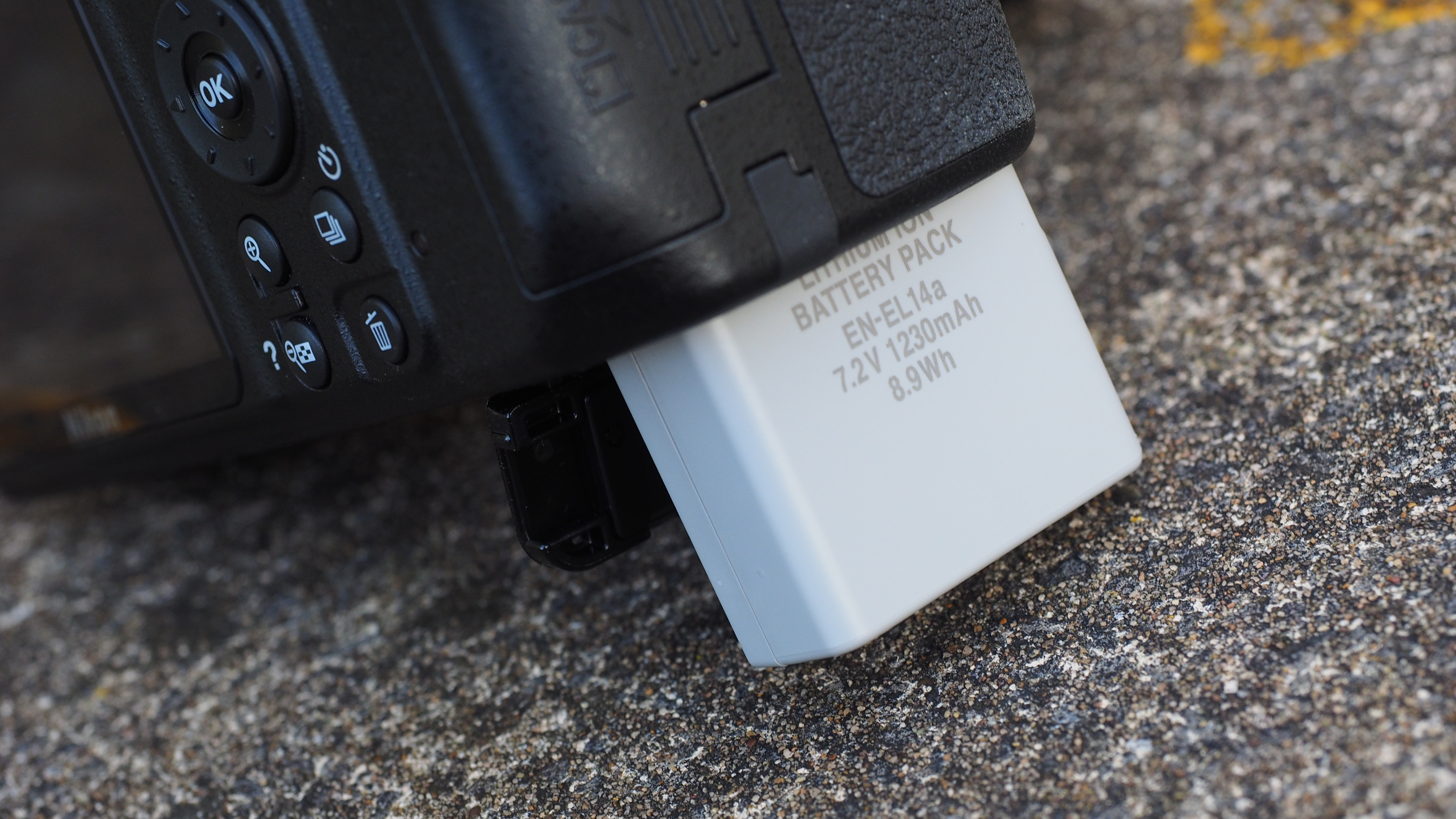
Nikon D3500: Up to 1550 frames per charge of its lithium ion EN-EL14a battery
Nikon D5600: Up to 820 frames per charge of its lithium ion EN-EL14a battery
Both our entry level DSLRs utilize the same EN-EL14a cell. Despite this, there appears quite a discrepancy in the performance each camera gets out of it, with the D3500 on squeezing almost double the amount of shots out of a fully charged cell as the D5600. Even more impressive is the fact that, with the D3500, Nikon managed to squeeze 30% more battery life out of the same unit as its D3400 predecessor.
So here, the Nikon D3500’s battery life proves a big plus point for this particular camera. A full charge of its lithium ion pack will provide 1,550 images, which is pretty incredible for a consumer DSLR and a good three or four times the amount that you’d get from a mirrorless camera alternative, at a similar cost.
For us, apart from its slightly cheaper price, this is really the only reason why you’d opt to buy the D3500 rather than the D5600 however – to make use of those generous extra captures before its battery waves the white flag.
Nikon D3500 vs D5600 Verdict
As we can conclude from the above, whichever of these two Nikon entry level digital SLRs you buy and use in isolation, you won’t go far wrong. When it comes to choosing between them, if your budget is particularly tight yet you want a DSLR with a decent battery performance then the D3500 just pips it. It does feature the same sensor and resolution as the marginally pricier D5600 after all.
However, when it comes to creative versatility and providing you with a camera you might use for longer – simply because there is more inherent flexibility here and more impressive specification – then the D5600 shouldn’t be discounted. Big differences over the D3500 include its angle adjustable touch screen which is also marginally larger and of higher resolution. There are also more AF points to play with, suggesting the camera is potentially swifter and more accurate in determining focus. Set against this of course is the fact that users will only squeeze about half the shots from a full charge of its lithium ion battery as the D3500; that said, up to a CIPA tested 820 frames for a consumer level DSLR is not to be sniffed at and betters the performance of the vast majority of alternative mirrorless system cameras.
Ultimately if you’re looking for a starter DSLR, your choice of camera probably comes down to which unit you can get the best deal on. Fortunately we’ve also provided you with a range of cash saving deals to choose from right here. Money aside though, the D5600 just pips it for us here to take the winner’s trophy.
How we test cameras
We test DSLR cameras both in real-world shooting scenarios and in carefully controlled lab conditions. Our lab tests measure resolution, dynamic range and signal to noise ratio. Resolution is measured using ISO resolution charts, dynamic range is measured using DxO Analyzer test equipment and DxO Analyzer is also used for noise analysis across the camera's ISO range. We use these real-world testing and lab results to inform our comments in buying guides. For compact cameras and phones, we judge on real world handling and photographic results alone.
Read more
Best student cameras
The best camera deals, reviews, product advice, and unmissable photography news, direct to your inbox!
Gavin has over 30 years’ experience of writing about photography and television. He is currently the editor of British Photographic Industry News, and previously served as editor of Which Digital Camera and deputy editor of Total Digital Photography.
He has also written for a wide range of publications including T3, BBC Focus, Empire, NME, Radio Times, MacWorld, Computer Active, What Digital Camera and the Rough Guide books.
With his wealth of knowledge, Gavin is well placed to recognize great camera deals and recommend the best products in Digital Camera World’s buying guides. He also writes on a number of specialist subjects including binoculars and monoculars, spotting scopes, microscopes, trail cameras, action cameras, body cameras, filters and cameras straps.
